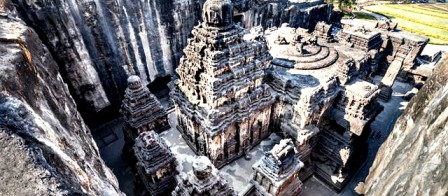Indus valley civilization - History Study Stuff & Notes
Before you start, remember: The Harappan civilization is also known as the Indus Valley Civilization
The explorer of Indus Valley Civilization:
Alexander Cunningham - He was the first Director General of ASI. They began excavations in the mid-19th century.
John Marshall - He was the Director General of ASI in 1927 and the first professional archaeologist of India. But But they induced horizontally and were all grouped together even when found in different stratigic layers. Very valuable information related to this was lost.
R.E.M Wheeler - He followed the progress of digging rather than digging horizontally.
Basic features of Indus Valley Civilization:
• Indus Valley Civilization is the first known urban culture of India.
• most of the sites developed on the banks of river Indus, Ghaggar and its tributaries.
• This civilization is credited with completing the construction of cities: city planning, sanitation, drainage systems and widened roads.
• They also built two-storied house with burnt bricks, including kitchen, bathroom and a well.
• There were important buildings in their cities, such as large bath, assembly halls and granaries.
• Thier agriculture was considered a major occupation for rural areas. Residents of the city were involved in internal and external trade, which led to developed contacts with other civilizations (such as Mesopotamia).
• There were excellent potters in Harappa, which is evident from their artifacts.
• The Harappans also had knowledge of the process of metallurgy and metal-making (such as a bronze statue of a dancing girl found in Mohenjodaro).
• In addition, shell, ivory and bone were used as materials for the manufacture of various crafts.
• Being a dockyard in Lothal, it deserves special mention. It is located in Ahmedabad, Gujarat.
• Lothal was a well-planned border town that was an important center of sea trade with the Western world.
• Other important cities here were Dhaulavira (Gujarat) and Kalibangam (Rajasthan).
• they also worshiped a male lord similar to Lord Shiva and Mother Goddess.
• Maybe they believed in life even after death.
• They had engraved seals with animal figures (such as hump bulls, elephants and rhinoceros). This suggests that these animals were considered sacred.
• The image of the peepal tree is depicted on several seals.
• harrapans were the first to cultivate cotton. They knew the art of spinning and weaving.
• The Harappan script has not yet decayed. Therefore, knowledge of the Harappan civilization is based only on archaeological evidence.
Indus Valley Civilizations: Important sites
We first look at the major sites:
• Harappa was an urban center. It is in the Punjab province of Pakistan, situated on the banks of the Ravi River.
• Mohenjo Daro is located in Sindh province of Pakistan, which is located next to the Indus River.
• Dholavira had been located on the Khadir Bet ', an island in the Rann of Kutch, Gujarat, India.
• Lothal is located in the Gulf of Khambat, Gujarat, India, near the Sabarmati River and the Arabian Sea.
• Rakhigarhi was discovered only in Haryana, India in 1990.
• Ganeriwala is located in the Punjab province of Pakistan and is very close to the Indian border.
Small sites are also being excavated in the context of Indus Valley Civilization:
• Gola Dhora (Bagasra) is a site located in Gujarat, India.
• Dayamabad is located near Mumbai in Maharashtra, india.
• Chanhudro is located 80 miles from Mohenjo Daro in Sindh, Pakistan. A manufacturing center has been established here.
• Sutkagen Dor is situated in Baluchistan. It is the westernmost site of the Harappan civilization.









0 Comments